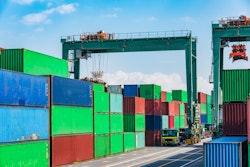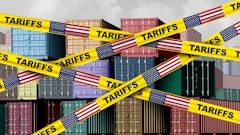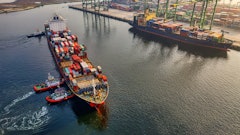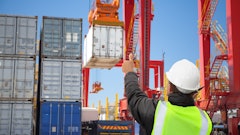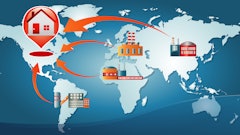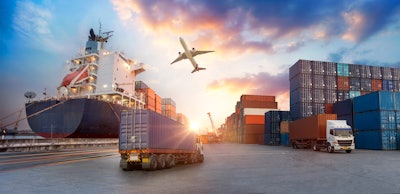
Ports worldwide are facing increased congestion due to growth in global trade, larger vessels and outdated or insufficient infrastructure. Regulatory changes, environmental concerns and disruptions, including geo-political tensions, cyberattacks and weather events, have exacerbated congestion. Meanwhile, global rising temperatures are placing additional strain on the supply chain, particularly the cold chain. Now, it takes more energy to keep fresh and frozen foods at precise, required temperatures.
No certain port
Port congestion is increasingly becoming a bottleneck in global trade, impacting supply chain timelines and efficiency. For instance, attacks in the Red Sea and subsequent vessel diversions have led to gridlocks, soaring costs, extended voyage times or cargo delays. The average worldwide cost of shipping a 40-foot container has more than tripled compared to last year, eating into profits and fueling inflation. More importantly, these delays can impact the quality and safety of food and other perishable items. All of this underscores the importance of efficient temperature monitoring and real-time visibility to mitigate the spoilage of perishable goods during transit.
While logistics managers and supply chain operators face immense pressures, as with all things, knowledge is power. They can start addressing common challenges in cold chain by equipping themselves with modern technology to monitor internal cargo conditions, track location and optimize shipping routes of temperature-sensitive goods.
Close monitoring of perishable shipments is essential. With frequent door openings and variations in truck temperature, maintaining shelf life is vital. That data is critical to decision-making, and ultimately, getting quality products and food to port and safely into the hands of consumers. One of the primary concerns in the cold chain is the risk of temperature excursions that can compromise the quality and safety of goods. Temperature monitoring devices and real-time loggers offer real-time visibility into shipment conditions. Maintaining real-time visibility of shipment conditions ensures stakeholders can quickly intervene if temperatures deviate from optimal ranges. This proactive approach safeguards product quality and minimizes costly losses due to spoilage or regulatory non-compliance.
Logistics solutions provide critical insights and data analytics that enable logistics managers to optimize route planning, prioritize shipments and streamline operations amidst congested port environments. With the right data, businesses can minimize delays, reduce dwell times and maintain supply chain fluidity even during peak shipping seasons.
Feeling the heat
If only arriving at port safely and on time was the only issue. Unfortunately, maintaining the integrity of temperature-sensitive shipments becomes even more challenging as global temperatures continue to fluctuate. Businesses need resilient monitoring solutions that are designed to operate effectively in diverse environmental conditions. Back-up power is just one basic way to decrease risk. Additionally, different communication platforms, IoT technology and cloud software services can locate, calculate and plot out alternate routing for assets, depending on the weather, in real-time. Whether it’s extreme heat waves or unexpected cold snaps, adaptive technologies ensure that products remain within specified temperature ranges throughout their journey, regardless of external elements.
Beyond operational efficiency, businesses need advanced technology solutions to address increasing sustainability and regulatory compliance demands. More advanced measurement and monitoring solutions help companies reduce carbon footprints by optimizing energy use and minimizing waste in the cold chain. Moreover, compliance monitoring features ensure adherence to stringent regulatory requirements, fostering trust and credibility among stakeholders and regulatory bodies.
Investing in state-of-the-art temperature monitoring systems that furnish real-time data empowers swift corrective actions when temperature deviations crop up. Temperature-safe storage and transport ensure that storage facilities and transportation methods are well-equipped to maintain the necessary temperature ranges. Quality should never be compromised for the sake of cost-cutting. Rigorous documentation and compliance regarding maintaining temperature data aid in quality control and provide evidence of regulatory compliance. Routinely evaluating and enhancing temperature management processes and technologies helps stakeholders stay ahead of potential problems rather than reacting to issues that might surface.
Adapting to a complex, evolving landscape
The increasing congestion at global ports and the challenges presented by fluctuating temperatures are placing significant strain on the supply chain, particularly the cold chain. The impact of these challenges on the timely and safe delivery of perishable goods cannot be understated. It is imperative for businesses to invest in advanced technology solutions for temperature monitoring, route optimization and compliance management to mitigate these issues. By leveraging real-time data and proactive measures, stakeholders can minimize delays, maintain product quality, reduce waste and ensure regulatory adherence. Data and technology are a cornerstone for continuous evaluation and adaptation, so businesses are ready for future disruptions. Addressing these challenges with innovative solutions will not only enhance operational efficiency but also uphold the integrity and safety of temperature-sensitive shipments in an ever-evolving global trade landscape.






